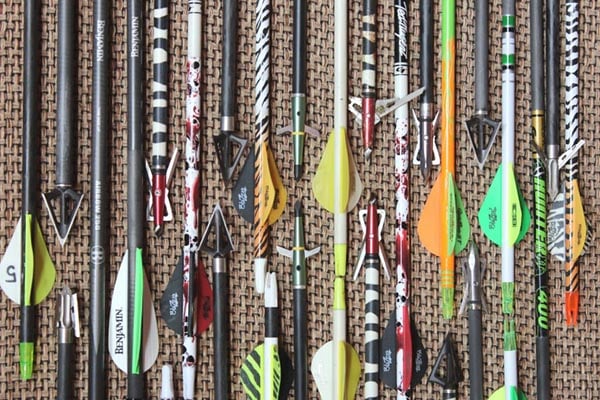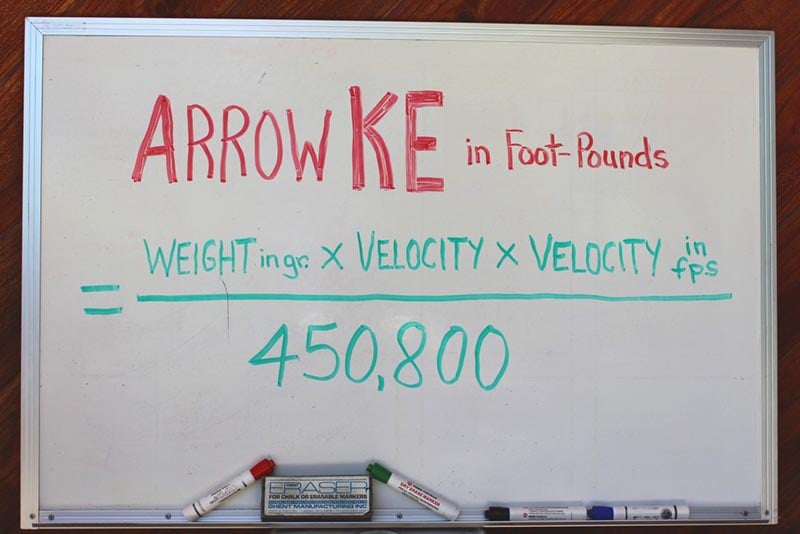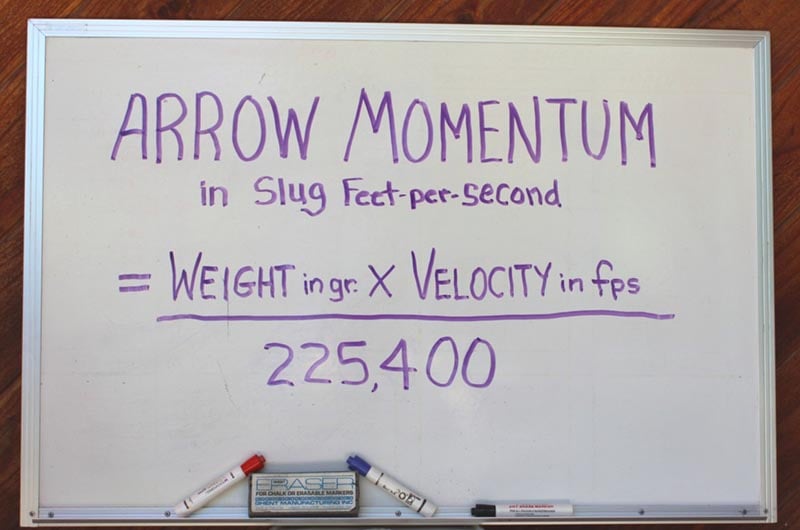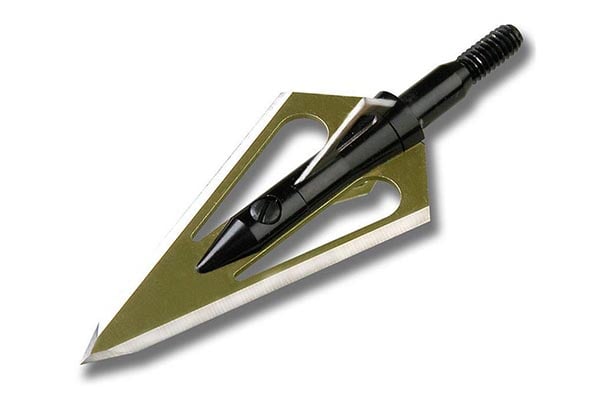By Tony Martins
If you’re a hunter, chances are good that you know something about kinetic energy. It’s generally understood that the greater the kinetic energy, the greater the killing power of the bullet or arrow. Momentum is another important factor in the lethality equation, particularly if you’re a bowhunter. Unfortunately, momentum (a.k.a. “persistence force”) is often overlooked, and unless you’re also a physicist, more difficult for most hunters to relate to lethality. Understanding how kinetic energy and momentum affect downrange performance will help to make your bow and the arrows it launches more deadly on the game that you hunt.
What is Kinetic Energy in Archery?
Let’s start with a basic review of kinetic energy and momentum as they relate to archery equipment. We know from physics that kinetic energy is a function of the speed and mass of a moving object. An arrow at rest in a quiver has no energy. Work must be performed on the arrow to give it energy, and this work is performed by the archer. When the bowstring is pulled and the bow limbs flex, energy is created by the archer’s work. At full draw, this “potential” energy is stored in the bowstring and flexed bow limbs. When the string is released most of this stored energy is transferred to the arrow, while some is converted into noise and vibration, and some is consumed by friction in the moving components of the bow. The greater the efficiency of the bow, the greater the percentage of energy transferred to the arrow.
Although some is lost in conversion, most of the energy transferred from the bow and string to the arrow is used to propel it forward, giving the arrow kinetic energy (KE) during its flight. The basic formula for calculating KE is 1/2 the mass of the moving object multiplied by the square of its velocity [KE = 1/2 (mass) x (velocity x velocity)]. The expression of KE that is most useful for bowhunters multiplies the weight of the arrow in grains by the square of the arrow speed in feet-per-second, and then divides the product by the constant 450,800. The result is expressed in foot-pounds of energy (fpe), or the energy required to exert 1 pound of force for a distance of 1 foot.
What is Momentum in Archery?
While KE is a measurement of the energy of a moving object without regard to direction, momentum is a measurement of the persistence force of the forward movement of that object. Persistence is the force that drives the arrow into an animal, which explains why “P” is the symbol for momentum. Another way to understand this concept is to describe momentum as the resistance force required to stop the arrow as it passes through the hide, tissue, body fluids and bone of an animal. Momentum advocates argue that KE indicates how hard an arrow will hit, but actually has little to do with arrow penetration. As can be seen in the formula above, velocity has a much greater influence on KE than mass. The formula for momentum places much greater emphasis on the mass (or weight) of the arrow [P = (mass) x (velocity)]. Momentum in terms that may (or may not) be useful to bowhunters is calculated by multiplying the weight of the arrow in grains by the arrow speed in feet-per-second, and then dividing by the constant 225,400.
The result is expressed in slug feet-per-second (slug fps), and herein lies the problem that undoubtedly limits the practical application of momentum by bowhunters – what in hell is a “slug?” A slug is a unit of mass that accelerates by 1 foot per second per second when acted upon by 1 pound of force. Huh? Absolute understanding of this measurement unit undoubtedly requires some background in Newtonian physics, which is a tad beyond the comprehension level of this bowhunter! Let’s just say that momentum is a measurement of the concentrated force of an object that is moving in a specific direction at a specific point in time. For bowhunters: It’s the force that enables an arrow to rip through animal hide, tissue, bone, etc.
Kinetic Energy and Momentum
Although technical experts in the archery and firearms industries typically extol the virtues of kinetic energy and rarely mention momentum, there are some momentum advocates that stand firm in their belief that P is more important than KE in lethality assessments for comparatively slow moving hunting projectiles like arrows. Central to this line of reasoning are the differences in how bullets and arrows kill. Bullets fired at high velocity from “high-powered” rifles kill by transferring their stored kinetic energy causing direct tissue damage in a wound channel, and indirect tissue damage from the “shock” of that energy transfer well beyond the wound channel. Blood loss and/or shock trauma cause fatality. [Note: You can see the shock that results from firing bullets into ballistic gelatin vividly demonstrated in a host of YouTube videos.] In comparison, arrows tipped with broadheads launched at comparatively low velocities from bows kill by cutting a wound channel with sufficient penetration to cause fatal blood loss. Penetration is a function of momentum (persistence) of the arrow/broadhead projectile, with little added benefit due to “shock” from the transfer of kinetic energy stored in the arrow – which may pass-through completely, thus retaining some of its KE.
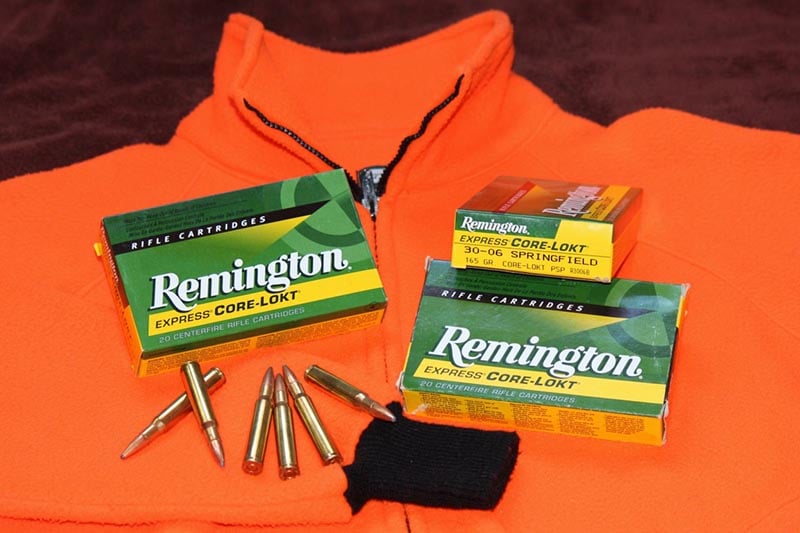
The Misuse of “Speed Kills” in Bowhunting
Speed kills. This is an overused and often misused cliché, particularly when it comes to bowhunting. Although light-weight/high-speed arrows offer some definite advantages over heavier/slower arrows (discussed later), additional killing power is not among them. A light-weight arrow will be slowed by air resistance at a greater rate than a heavier arrow with the same aerodynamic profile (… here we go with Newton’s Laws of Physics again!). Thus, the heavier/slower arrow will retain a greater percentage of its KE and its momentum downrange, and arrive with greater killing power as well. Not convinced? Prove it to yourself with this simple experiment: Throw a 0.7-oz. Wiffle Ball as hard as you can against the door of your wife’s (husband’s) brand new car (truck). It will hardly leave a mark. Next, repeat this exercise with a 5.25-oz. regulation baseball. If you prefer to take my word for it instead of testing this concept yourself (and avoid a costly trip to the auto body shop and/or divorce court), a very obvious and substantially greater amount of damage will result from the impact of the heavier/slower baseball!
Personal Experience with Heavy Arrows in Africa
On my first bowhunting trip to Africa I witnessed the superior penetration power of heavy arrows. I insisted that we hunt on foot – “walk-and-stalk” as they call it – rather than hiding in a blind, and my outfitter and Professional Hunter insisted that I must use the heaviest arrows that my bow would shoot accurately. Large barreled grass-eaters known for stopping arrows – like zebra, gemsbok and wildebeest – were on my hit list, and all African plains game species are tough. I had been shooting a 427-grain arrow (including 100-grain broadhead) from my 60 lb. PSE X-Force bow, with excellent results on animals ranging in size from coyotes and bobcats to whitetails and mule deer. These arrows were leaving the bowstring at 305 feet-per second, with 88 ft-lbs of KE and momentum calculated at 0.578 slug fps. After a great deal of sight pin adjustment and bow tuning that included cranking the draw weight up to 63 lbs., I was placing new Carbon Force “Black Mamba” arrows in and around the 10-ring regularly out to 50 yards. Fitted with full-length inserts boosting shaft weight to 19.7 grains-per-inch, these arrows tipped the scales at 702 grains (with broadhead). Velocity slowed to only 220 fps (nearly –30%) and KE dropped to 75 ft-lbs (–14%), but momentum increased to 0.685 slugs (+18.5%).

The results? My first animal was an old gemsbok with a belly stuffed full of grass. After a 30-minute stalk (mostly crawl) the cover ran out at 50 yards. From that position, at an angle much narrower than quartering away, the arrow had to be perfect… and it was, despite the prominent arch in its flight. Knowing the precise shot distance – confirmed by laser rangefinder – was critical. Arrow penetration was remarkable, death came in less than a minute and recovery was just a few yards. I immediately became a believer in the merits of heavier/slower arrows with their greater momentum that facilitates penetration on larger, tougher game.
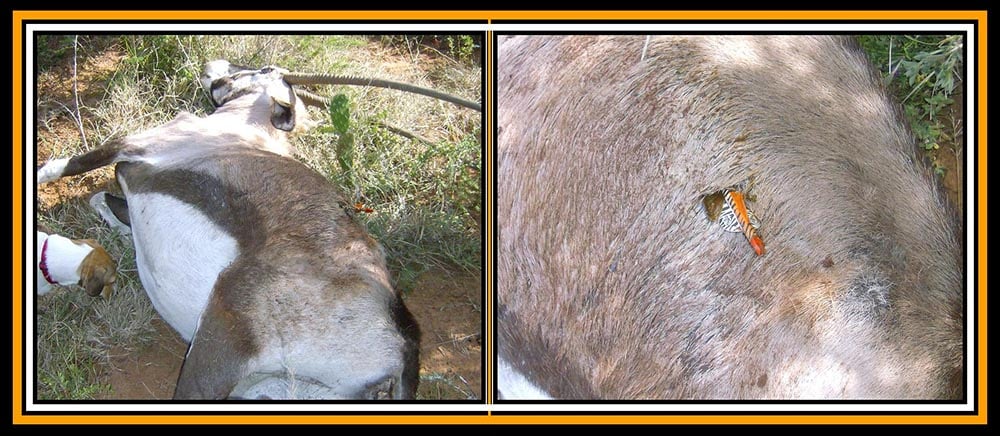
Advantages & Disadvantages of Fast Arrows
So, based on the above, we can conclude that heavier/slower arrows are better for hunting than lighter/faster arrows, right? Not necessarily. What you hunt and how you hunt are also major considerations for determining what arrow is best. If you hunt turkeys behind decoys from a groundblind or whitetails exclusively from a treestand, and limit your shots to 20 yards, almost any arrow/broadhead combo that you can shoot accurately will get the job done. If you take longer shots, hunt on foot where awkward shooting positions may be required, and/or hunt flighty game that’s likely to move before the arrow arrives however, you probably prefer faster and thus, lighter arrows.
Fast arrows provide bowhunters with a couple of practical advantages over slower arrows. The faster an arrow flies, the quicker it arrives on target, leaving less time for the effects of air resistance and gravity. From the time an arrow leaves the string air resistance (friction) acts to slow it down, and gravity pulls it toward the ground. Thus, a fast arrow will have a flatter trajectory than a slower arrow. This not only facilitates accuracy, but it’s also more forgiving when distance is misjudged. Bowhunters speak in terms of “… one pin out to 40 yards.” The practical meaning is that a really fast arrow will likely hit the kill zone of a deer-sized animal up to 40 yards away, even if the distance is poorly judged. This can prove to be an advantage in many bowhunting situations. Conversely with my 702-grain, 220 fps African arrows, placing the 35 yard pin on the heart of a deer 40 yards away would likely result in a clean miss under the animal! This does not mean that heavy arrows are not accurate – it simply means that the margin for error in estimating distance is greater with a lighter arrow, due to its flatter trajectory.

Another benefit of really fast arrows is their shorter flight duration that leaves less time for target animals to move. When a bow launches an arrow, some of the potential energy that was stored in the drawn bow limbs and string is converted to sound. This sound travels 3-5 times faster than the arrow, so the target animal will most certainly hear the bow and have a chance to move before the arrow arrives. The faster the arrow flies, the less time the animal has to react to the sound and the greater the likelihood that the arrow will deliver a lethal hit. In the typical reaction, the animal will crouch down as its muscles tense for subsequent explosion into movement. Also called “jumping the string,” this gives the appearance that the animal has “ducked” under the arrow.
On the African bowhunt noted above, I also took a supply of my regular 427-grain, 305 fps arrows for use on smaller, lighter game that would almost certainly be encountered. Although it worked for me, I do not recommend carrying two different weight arrows while bowhunting, as accuracy problems could result. To avoid this I had to memorize 14 different impact distances – two for each of my 7 sight pins – and recall them instantly and correctly at the moment of truth! With my bow tuned perfectly for the heavyweight 702-grain arrows, a smaller percentage of the bow’s energy would be transferred to the lighter arrows than the heavier arrows on release, leaving more energy available for conversion to vibration and sound. This is the reason that heavy arrows release more quietly than light arrows, and they are also quieter in flight, as greater force is placed on the faster (lighter) arrow by air resistance.
This often overlooked disadvantage of light-weight high-speed arrows is vividly demonstrated in the video above. The outstanding common duiker ram was feeding with his mate nearby while I crawled into position behind some elevated vegetation 42 yards away. Although he did not see me, he was alert and aware that something wasn’t right. Despite a stiff wind, the PH/cameraman said he could hear the arrow release from more than 100 yards away. The arrow arrived in less than 1/2-second, yet the little guy was able to “duck” under it. It happened so quickly that I thought I simply shot too high, but the video shows the shot would have been good had the ram not moved. Heartbreaking lesson learned: Fast is good, but additional noise/vibration caused by light/fast arrows is not good when hunting wary, skittish animals.
What to Consider When Choosing Arrows
It takes some time and effort (and expense!) to find the perfect hunting arrow for your bow setup. Some bowhunters are convinced that “speed is king” and “kinetic energy kills” so they choose the lightest/fastest arrow that their bow will shoot safely. The International Bowhunting Organization (IBO) has established a 5 grains-per-pound of draw weight safety standard. Thus, a 60-pound bow should shoot arrows that are no lighter than 300-grains (5 grains-per-pound x 60 lbs.). The IBO minimum arrow mass standard is enforced at 3D shoots, as archers typically want the fastest, flattest shooting arrows for target competition, where excess noise and vibration are non-issues. As witnessed above however, bowhunters are better served by a quiet shooting rig that sacrifices a little KE as a trade-off for greater momentum (and penetration).
A number of KE standards and recommendations are available for bowhunters but unfortunately, no such standards have been established for momentum. The most often cited KE reference for killing game with arrows comes from Easton Archery:
| KINETIC ENERGY | GAME RECOMMENDATION |
| 15-25 ft-lbs | Small Game (rabbbit, groundhog, etc.) |
| 25-41 ft-lbs | Medium Game (deer, antelope, etc.) |
| 42-65 ft-lbs | Large Game (elk, black bear, wild boar, etc.) |
| 65-80 ft-lbs | Toughest Game (cape buffalo, grizzly, moose, etc.) |
Now, let’s assume draw weights of 40-, 50-, 65- and 80-pounds for the four Easton categories (top to bottom). Using the IBO minimum of 5-grains-per-pound, we can equate the following minimum arrow weights to the Easton categories: 200-grains, 250-grains, 325-grains and 400-grains (top to bottom). Using these minimum arrow weights as a baseline for each category, and the upper and lower KE’s from the table, we can use the KE formula discussed above to calculate the minimum arrow velocities necessary to generate those KE’s, as shown in the table below:
| DRAW WT. | ARROW WEIGHT ENERGY | KE / VELOCITY | KE / VELOCITY |
| 40-pounds | 200-grains minimum | 15 ft-lbs = 184 fps | 25 ft-lbs = 237 fps |
| 50-pounds | 250-grains minimum | 25 ft-lbs = 212 fps | 41 ft-lbs = 275 fps |
| 65-pounds | 325-grains minimum | 42 ft-lbs = 242 fps | 65 ft-lbs = 300 fps |
| 80-pounds | 400-grains minimum | 65 ft-lbs = 271 fps | 80 ft-lbs = 300 fps |
And, with arrow weights and velocities established, we can now use the formula discussed above to calculate the momentum force range that corresponds to each KE range in the Easton Archery table:
| MOMENTUM | KINETIC ENERGY | GAME SIZE |
| 0.163-0.210 slug fps | 15-25 ft-lbs | Small Game |
| 0.207-0.305 slug fps | 25-41 ft-lbs | Medium Game |
| 0.349-0.433 slug fps | 42-65 ft-lbs | Large Game |
| 0.481-0.532 slug fps | 65-80 ft-lbs | Toughest Game |
And there you have it! With some well established parameters and simple mathematics we have developed the first of its kind – a table that relates minimum arrow momentum to game size. Let’s call it the Tony-MO Table.
So, here’s the $64,000 question: How can this information be used to create the perfect hunting arrow? Let’s say we are going to hunt elk with a bow drawing 65 pounds, and have been using 325-grain arrows flying at 300 feet-per-second. From the tables above, we see that this setup generates around 65 ft-lbs of KE and momentum of 0.433 slugs. Experimenting with inserts to increase arrow weight yields the following results:
| ARROW WT. | ARROW VELOCITY | ARROW KE | ∆ | MOMENTUM | ∆ |
| 325-grains | 300 feet-per-second | 64.9 ft-lbs | – | 0.433 slug fps | – |
| 425-grains | 271 feet-per-second | 69.2 ft-lbs | +6.6% | 0.511 slug fps | +18% |
| 475-grains | 257 feet-per-second | 69.6 ft-lbs | +0.6% | 0.542 slug fps | +6% |
| 525-grains | 244 feet-per-second | 69.3 ft-lbs | – 0.4% | 0.568 slug fps | +4.8% |
Increasing arrow weight from 325-grains to 425-grains decreases velocity by almost 10% to 271 fps, but increases both KE by 6.6% and momentum by 18%! Adding another 50 grains of arrow weight boosts KE only slightly, but momentum increases by an additional 6%, while the velocity slows another 5% to 257 fps. Adding 50 grains more to arrow weight actually reduces KE slightly due to velocity loss, while momentum continues to improve by about 5%. At this point, additional arrow weight adds little in the way of additional killing power, and additional arrow drop in flight from significant velocity reduction makes accurate arrow placement more difficult. The 525-grain arrow now exceeds the practical limit for most types of hunting, so backing off a little, the optimal “killer” arrow for this bow should weigh from 475- to 500-grains.
Applying the above principles (practicing what I preach) to my PSE EVO Max with draw weight set at 69.2-pounds, I’m now shooting 300-spine arrows weighing 487-grains (including 100-grain broadhead) at 294 fps. This setup generates a whopping 93.4 ft-lbs of KE and more importantly, 0.635 slugs of penetration force. This is nearly 50% more than the high end of the momentum range for elk listed in the Tony-MO table, and 20% greater than the high end of the momentum range for the toughest game category. And as you might expect, this setup has proven to be a real killer on big bull elk. Understanding and applying the dynamics of both kinetic energy and momentum discussed here will make you a more lethal bowhunter… guaranteed!
